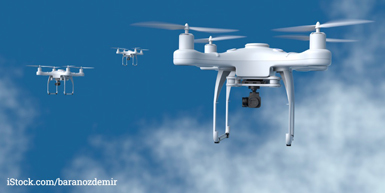
Last week NAAA testified before an FAA public meeting on the FAA aviation rulemaking committee (ARC) proposing recommendations for drones to fly beyond visual line of sight (BVLOS) in the national airspace. NAAA CEO Andrew Moore registered opposition and detailed the serious aviation safety risks posed by recommendations in the ARC’s report, such as allowing BVLOS drones, in certain circumstances, to fly in the same airspace as manned ag aircraft without providing right of way or equipping them with ADS-B avoidance technology.
Moore began his comments by underscoring the importance of the U.S. aerial application industry, stating that the industry treats “nearly one-third, or 127 million acres of U.S. cropland each year.” He also underscored the industry’s value by stating, “The amount of cropland needed to replace the yield lost if aerial application was not available for just corn, wheat, soybean, cotton and rice crops alone is 27.4 million acres—roughly the size of Tennessee. The value of the U.S. aerial application industry for just those five crops is estimated to be $37 billion. This figure is expected to grow substantially and in importance as food prices increase and food production becomes an issue of growing importance due to the Russian invasion of Ukraine, and growing supply and demand due to our growing global population.”
To see and listen to the complete FAA public meeting, click here. Moore’s testimony may be found at the 7:44 through 13:20-minute mark and is queued up in the video below.
NAAA submitted more detailed comments on its opposition to the UAS BVLOS ARC into the public record and in a letter to FAA Acting Administrator Nolen last month. Click here for more information about the detailed letter. Four out of six commenters in the public meeting opposed the ARC’s recommendations. The two in support were representatives of drone organizations.